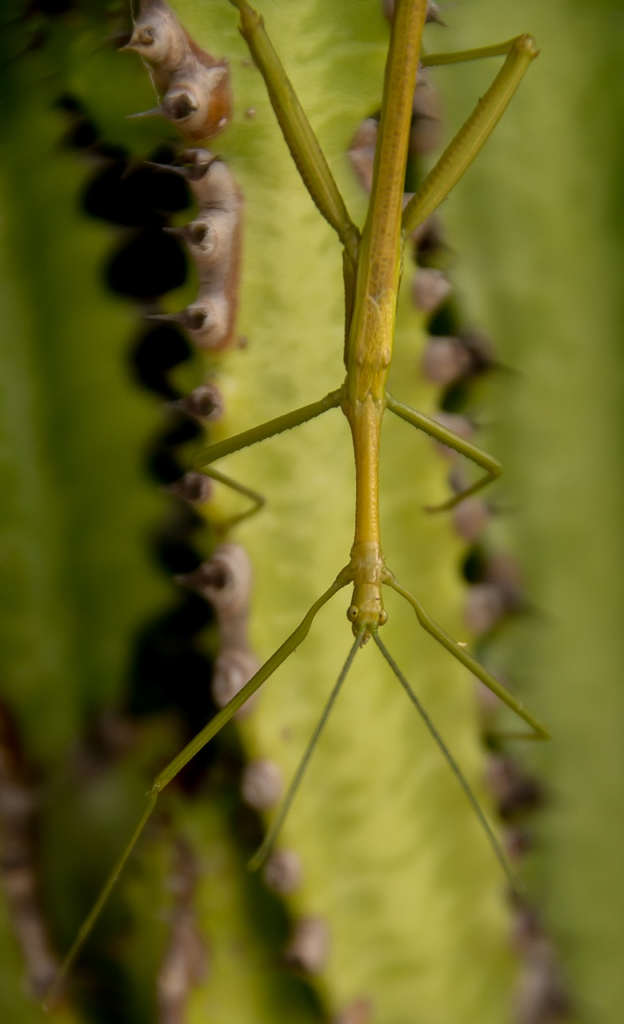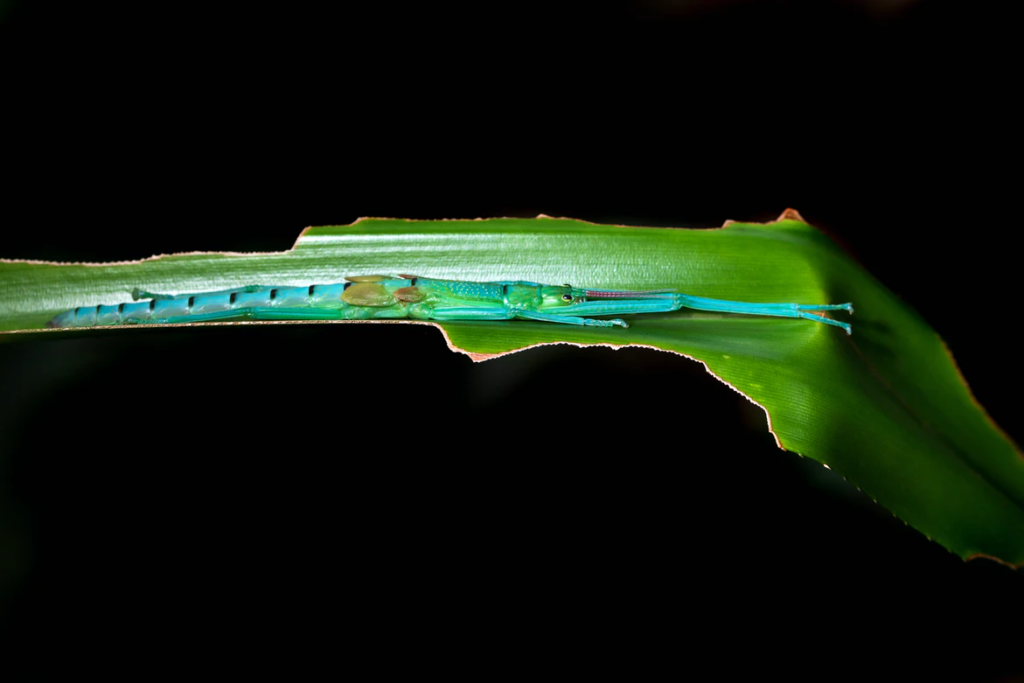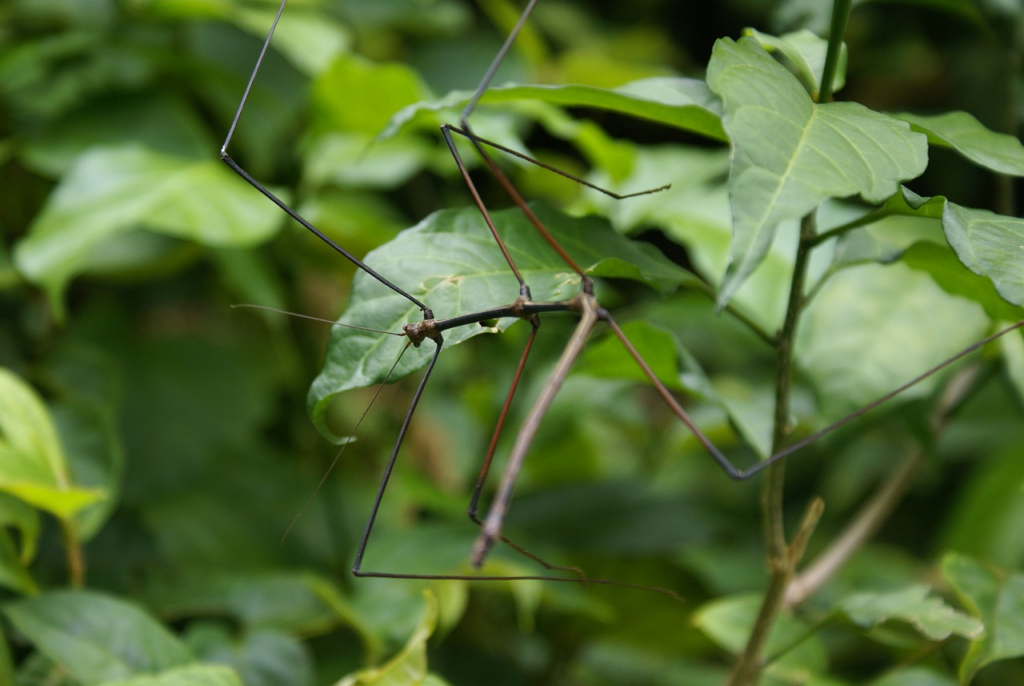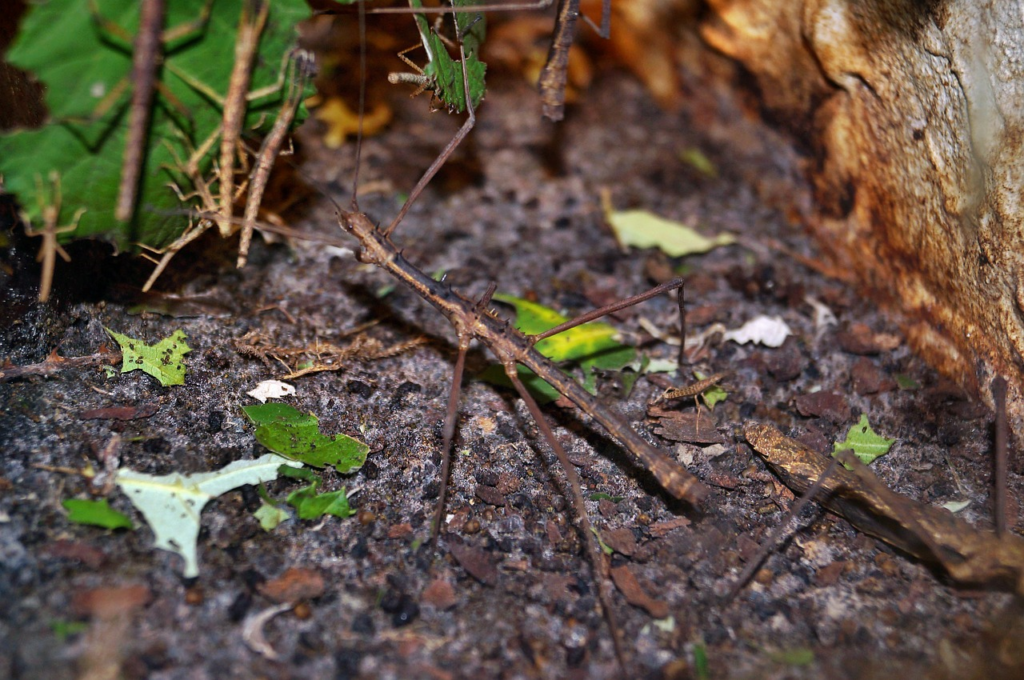Stick Bug Facts | Description, Habitat, Camouflage and More
Animals protect themselves from predators in different ways. One method is camouflaging – where they look or act like something else, to hide in plain sight. Chameleons are masters of camouflage, and can change their colors according to their surroundings to blend in!

But did you know there’s an entire group of insects who camouflage themselves to look like sticks and branches of trees? They’re called Stick Bugs! Stick Bugs are known by many different names like stick insects, walking sticks, bug sticks, stick animals, or ghost insects.
As they belong to the order Phasmida, they’re also called phasmids. There are over 3000 different species of Stick Bugs! Let’s learn more about them.
What do Stick Bugs look like?

True to their name, Stick Bugs resemble twigs or branches of a tree. They’re usually brown, green or black. They have a thin, cylindrical shape with long and slender legs. However, some species are brightly colored, and even have wings!
How big do Stick Bugs get?
Stick Bugs are the world’s longest insects. Most species are about 12 inches long. The longest Stick Bugs are of the species Phobaeticus chani. Also called Chan’s Megastick, they can stretch to a whopping 22 inches! There are smaller species too, which grow to just 0.5 inches.
What do they eat?
Stick bugs are herbivores! They feed mainly on tree leaves and shrubs using their strong mandibles. They’re also nocturnal. This means they spend most of the day motionless and hidden among the plants, and munch on leaves during nighttime.
Where do Stick Bugs live?
Stick Bugs are found on every continent except Antarctica! Most species live in Southeast Asia and South America, Australia, Central America, and the southern United States. The Asian island of Borneo alone has more than 300 species of Phasmids!
Stick Bugs Habitat
Stick Bugs are found throughout the world in warmer climates, mostly in tropical and subtropical areas. Some species also live in temperate regions. They thrive in forests and grasslands, where they get plenty of covers to hide.
Stick Bugs Lifespan
The average lifespan of Stick Bugs in the wild is 1 to 2 years. Some Stick Bugs species can live up to 3 years, while others have a lifespan of a few months. Their lifecycle consists of three stages: egg, nymph (or baby Stick Bugs), and adult.
Stick Bugs Behavior
Stick Bugs sometimes rock back and forth repetitively, especially while walking. This makes them look like branches of a tree moving with the wind. By doing this, they are also better able to check for food and predators in the background.
Stick Bugs play an important role in the ecosystem due to what they consume. They eat dead leaves and new plants and enrich the soil when they excrete. This also opens up areas for plant growth. Thus they help recycle vegetation.
Mating times of Stick Bugs vary for different species. Some species let the females deposit eggs first, and then the male fertilizes them later. Other species have mating rituals, which can go on for 80 days! Males often also fight each other for the right to mate.
Stick Bugs Defenses
Camouflage

Stick Bugs can hide from predators due to their natural appearance, which makes them look like twigs and branches. This form of camouflage is called plant mimicry. Some Stick Bugs also have wings that look like flat leaves.
Some Stick Bugs species like Pseudodiacantha macklotti and Bactrododema centaurum allow moss and lichens to grow on their body to improve their disguise. Others, like Bostra scabrinota and Timema californica, can change their colors as the surroundings shift!
Stick Bugs may show a rocking motion to resemble twigs blowing in the wind. But generally, they adopt a rigid and motionless pose to resemble twigs on the ground. They can maintain this pose for very long periods to escape predators.
Regenerating Limbs
Stick Insects can also shed and regenerate their limbs! When attacked by a predator, Stick Bugs may detach a limb. They do this by using a special muscle to break it off at a weak joint. This is called autotomy. This distracts the predator, allowing the Stick Bug to quickly escape.
Stick Bugs regenerate their limbs when they shed their skins or molt. Baby Stick Bugs can regenerate a limb in a single molting. An adult limb can take 3 moultings to completely grow back!
Playing Dead
When a Stick Bug is attacked while perched on a tree, it may simply drop down and fall to the ground! There, the insect pretends to be dead by staying extremely still. This behavior is called thanatosis. A predator may be unable to find the immobile insect on the ground, allowing it to escape.
Some winged species also show a different defense. While falling to the ground, they flash their colorful wings to scare and ward off the predator. These wings close up and disappear when they land.
Odor Deterrents
Some Stick Bugs species have a very unique defense system! They have a special pair of glands in their mouth, which allows them to secrete different chemicals. The effects of these chemicals vary from species to species.
This spray of chemicals by Stick Bugs is often foul-smelling. This bad odor acts as a deterrent to the predator. Other chemicals might even cause a stinging and burning sensation in the eyes and mouths of the predator!
Some species use other organs to secrete chemicals. Some Stick Bugs bleed reflexively from joints in their legs. This blood contains foul-smelling compounds and creates a bad taste in the predator’s mouth. Some species even vomit out their stomach contents to repel predators!
Reproduction in Stick Insects
Stick Insects reproduce in many different ways. Some species reproduce by mating. Their coupling may continue for a couple of months! In other species, the female flicks her egg to the ground and the male then fertilizes it. In some others, the female can lay fertilized eggs on her own, and bury them in sandpits or hide them in leaves and stems to hatch.
Reproduce Without Males
Many species of Stick Insects are parthenogenic. This means that the female can lay eggs without mating with males to produce offspring. These eggs are entirely female and hatch into nymphs which are exactly like their mothers. One such species is the Laboratory Stick Insect, Carausius morosus.
Stick Insect Eggs
A single female Stick Bug can lay 100 to 1200 eggs after mating. These eggs often look like plant seeds and have hard shells. This protects the eggs from being eaten by carnivorous predators. The eggs can take 13 to 70 days to hatch nymphs.
Some eggs have a fatty capsule at one end, called a capitulum. This capitulum attracts ants which consider it a food source and carries the eggs to their nest. After feeding on the capitulum, they toss away the rest.
The egg continues to incubate in the ant colony. Once it hatches, the nymph, which also resembles an ant, emerges out of the nest safely. Eggs also have a special coating that makes them indigestible in a bird’s stomach, allowing them to be excreted undamaged.
Predators of Stick Insects
Stick Insects are easy prey for several predators and lie very low in the food chain. On the ground, rodents like rats and mice, reptiles like snakes, small mammals, spiders, and even other insects can catch and eat Stick Insects.
When they’re perched atop a tree, they can become meals for primates and birds. The most dangerous predators are bats. Since bats find their prey by making calls and hearing the sounds reflected off of other things, they make the Stick Insect’s camouflage useless.
Are Stick Bugs good pets?
Stick Bugs have been kept as pets all over the world, since ancient times. This is because Stick Bugs aren’t very dangerous to humans. They generally do not bite or attack. But they should still be handled with caution, as they have sharp spines that can draw blood.
They also don’t cause an infestation if they escape, and have a short lifespan. The most common species used as pets is the Indian Stick Insect, or Carausius morosus. They can be fed leaves like lettuce and ivy. Due to their size, they need a tall and enclosed glass area to be kept as pets.
Are Stick Insects in danger?
Stick Insect Population
Most species of Stick Insects have robust populations and are found all over the world. These species aren’t threatened. However, quite a few are critically endangered, and scientists are trying to increase their numbers.
One such species is Dryococelus australis, or the Lord Howe Island Stick Insect. It was thought to be extinct in 1920, but was rediscovered in 2001 as a small population of 24 insects! They’re one of the rarest insects in the world.
Stick Insect Threats
The biggest threat to Stick Insects is the loss of habitat due to the cutting of forests and pesticide use. The pet trade also threatens them, as they are captured in the wild and not allowed to breed. Some people also frame bodies of Stick Insects, making them vulnerable to this practice.
Stick Bugs Interesting Facts

- Some Stick Bugs can curl their abdomen upwards, to resemble scorpions and ward off predators!
- The chemical spray from one species, Megacrania nigrosulfurea, is used as a treatment for skin infections by a tribe in Papua New Guinea!
- Some tribes of the D’Entrecasteaux Islands make fish hooks from the legs of Stick Bugs!
- Stick Bugs are being studied to engineer six-legged walking robots!
- In ancient China, Stick Bugs were kept as pets as they were believed to bring good luck!
- Stick Insect fossils from 130 million years ago are the oldest example of insects fooling animals with their shape!
- Stick Bugs are related to cockroaches, praying mantises, and even grasshoppers and crickets!
